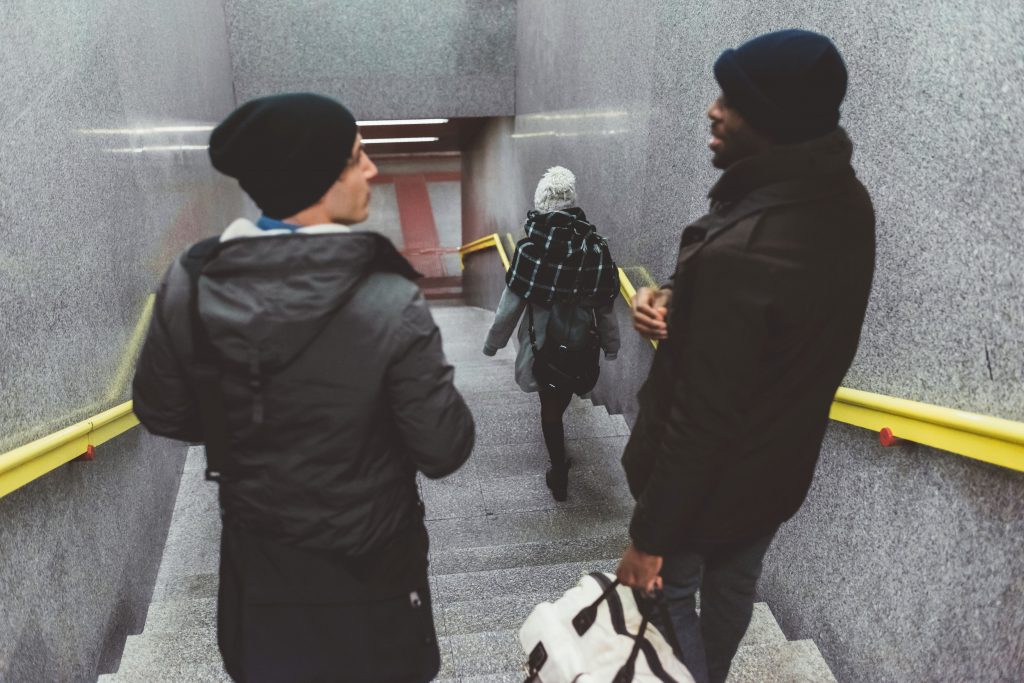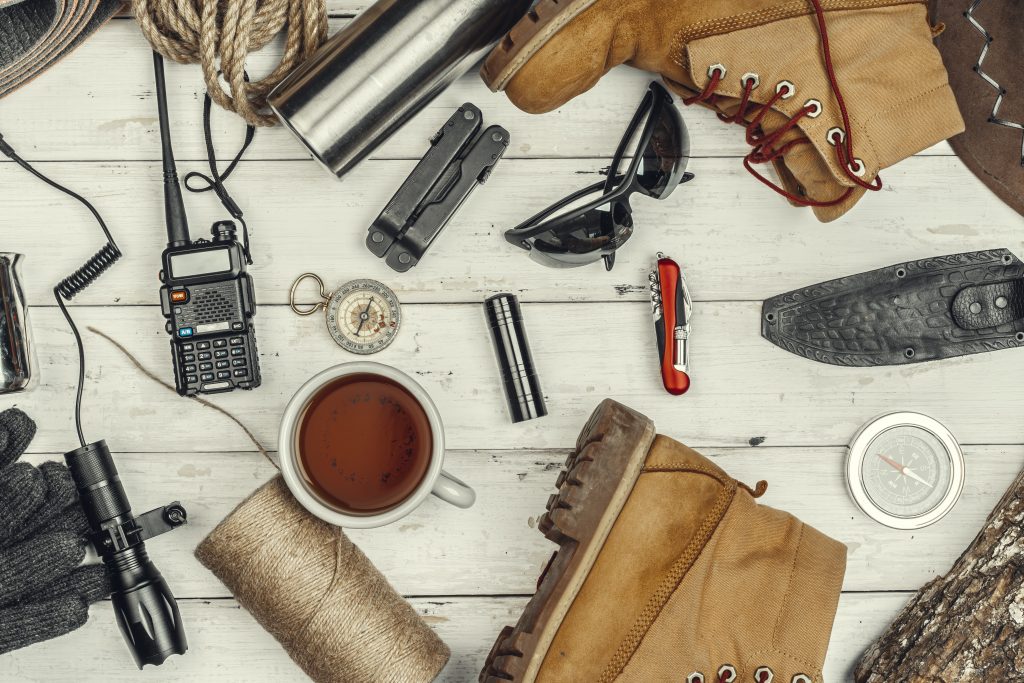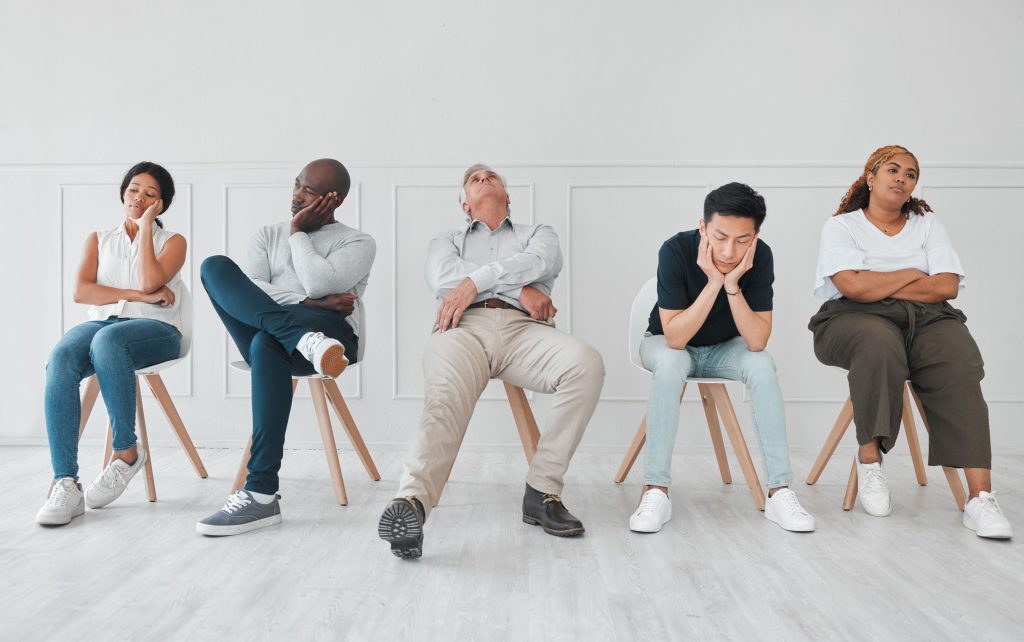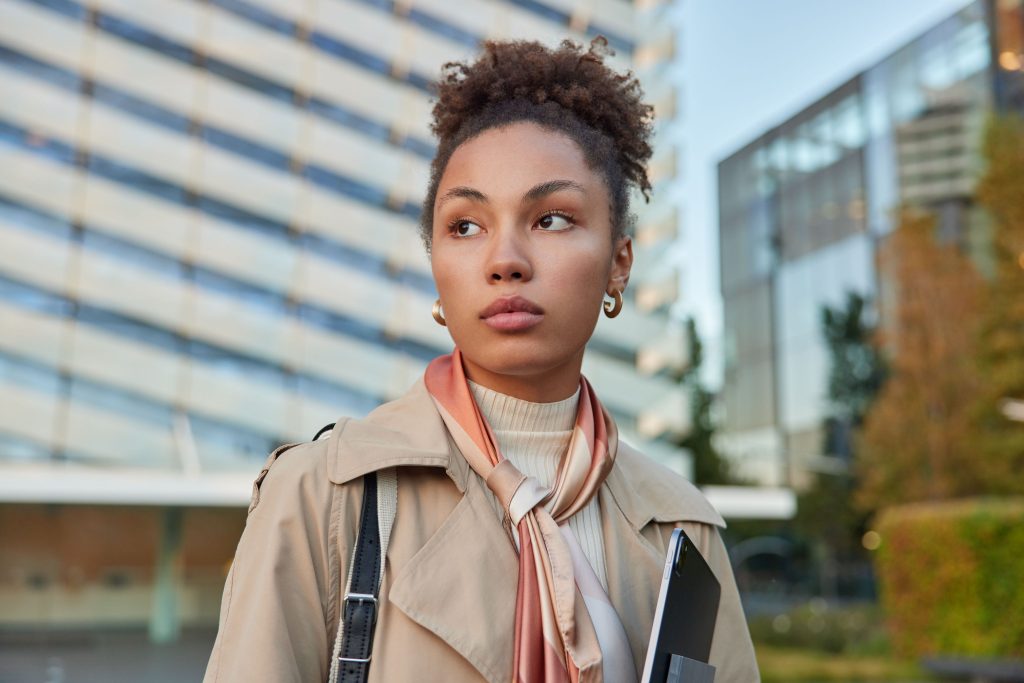Introduction
The world can be a confusing and sometimes dangerous place. In tough situations, it helps to avoid attracting unwanted attention. The Gray Man concept is a key survival technique that helps you slip through crowds or tense scenarios without standing out. Instead of wearing tactical gear or calling attention to yourself, you take steps to blend in. This approach can protect you from criminals, keep you safer during disasters, and make it easier to move freely in public spaces.
For some readers, this strategy may already sound familiar. Maybe you’ve practiced it at protests or big events, or you know people who swear by it for everyday safety. Others might be hearing the phrase “Gray Man” for the first time. Regardless of your background, this article will explain the basic ideas and methods you can use. From understanding crowd psychology to choosing the right clothes, the Gray Man concept is all about staying calm, subtle, and prepared. If you’ve never tried it before, you’ll learn how to move quietly while still keeping your senses on alert. If you’re more experienced, you might pick up a few new tips to refine your approach.

What Is the Gray Man Concept?
The Gray Man concept is all about being unnoticed. When you dress and act in ways that don’t draw attention, people’s eyes tend to skip over you. In a dangerous event—like a riot, a mass panic, or even a smaller emergency—staying out of the spotlight can help you avoid chaos.
Think of being on a busy city sidewalk. People wear many types of clothing. Some might have bright jackets or flashy shoes. Others dress in plain jeans and neutral jackets. If a fight breaks out or the police arrive, guess who’s more likely to attract attention—the person in neon gear, or the person wearing gray sweats and minding their own business?
Even though it’s common sense that “less showy” can be safer, the Gray Man concept goes deeper than clothes. It includes how you walk, talk, and interact with others. It’s a mindset that encourages you to stay prepared for emergencies but not advertise your preparedness. Many people make the mistake of showing off fancy gear or talking loudly about their tactical plans. This often backfires because it draws curious eyes—or even opportunistic thieves—straight to you.
Being “gray” does not mean being cowardly or uninvolved. Instead, it’s a strategic choice to reduce risks and travel with less hassle. When you make blending in a habit, most people won’t remember crossing paths with you. That’s exactly what you want if you’re trying to stay safe in an unpredictable situation.

The Psychology of Blending In
Our brains are wired to notice things that stand out. Bright colors, loud noises, or strange behavior will make people turn their heads. This is a survival instinct. Our ancient ancestors had to spot threats in the wild, so humans became very good at picking out anything unusual in the environment. This skill is still with us today.
The Gray Man concept works by limiting how many “unusual” signals you send. That means you avoid bright or odd clothing, extreme hairstyles, or loud accessories. It also means controlling your tone of voice and body language. If you act comfortable and calm, other people’s minds will treat you as part of the background.
There’s also a social aspect. Every culture has rules—some spoken, some not—about how people should behave in public. When you follow these rules, people rarely think twice about you. But if you break them, even by simply standing too close or talking too loudly, you stand out. By keeping your behavior neutral, you send the signal that you’re just another person going about your day.
This can be tricky for those used to showing off or proving their toughness. Openly carrying a big blade or dressing like you just stepped off a military base can feel empowering, but it also draws eyes. People might see you as a threat or a target. The Gray Man mindset requires a mental shift: the idea that staying invisible can be more powerful than commanding attention, especially when it comes to avoiding trouble.

Situational Awareness: The Foundation of the Gray Man Approach
Dressing to blend in is helpful, but it won’t do much if you don’t stay aware of what’s around you. Situational awareness is the skill of observing the environment, noticing changes, and reacting quietly before anyone notices you’re planning an exit. It’s sometimes taught using the OODA Loop: Observe, Orient, Decide, and Act.
Observing means scanning the room or street. Orienting involves placing yourself in that space—understanding where exits are and identifying potential threats or useful allies. Deciding is choosing the safest response, like leaving if a situation feels off. Acting is carrying out that choice. Done right, this entire process can happen in seconds, often without anyone else realizing you’re even doing it.
You don’t have to stare or turn your head constantly. A quick look around when you enter a building is enough to notice the layout, the crowd’s mood, and any potential hazards. Maybe you see someone loitering suspiciously near the door, or a group that seems heated in an argument. This is your cue to stay calm, keep moving, and maybe find a different path.
Confidence is also part of awareness. Even though you don’t want to appear tough or intimidating, you also don’t want to appear weak or clueless. A comfortable stance, a steady walking pace, and an alert gaze show that you’re paying attention but not panicking. Skilled criminals often prey on distracted or anxious people. If you seem sure of yourself—yet not threatening—they might simply move on.

Dressing for Anonymity
Clothing is the first thing people notice about each other, so it’s critical in becoming a Gray Man. When choosing your outfit, look at what most people in your community wear. Do they dress in T-shirts and jeans, or do they wear business casual? Try to fit in with those general trends but steer clear of anything flashy. If you’re unsure, neutral colors like gray, brown, navy, and black are safe bets.
Logos or slogans can be another red flag. A large brand name or an edgy statement on your shirt can make people remember you, so consider plain shirts or subtle prints. The same goes for jackets and accessories. You don’t have to wear old, worn-out clothes; you can look neat as long as it’s not too fancy or unusual.
Footwear often gets overlooked. Make sure your shoes are comfortable, practical, and blend with the general population. Bright neon sports shoes or heavy-duty tactical boots stand out more than you might think. A simple pair of dark or neutral athletic shoes can look ordinary in most settings.
Finally, be mindful of climate and region. A hoodie might be normal in one place but suspiciously out of place in warmer weather. A big winter coat in summer is an instant red flag. Dress for the actual weather and local norms so you don’t look out of place. If you do this well, most people’s eyes will glide right past you.

How to Modify Your EDC to Avoid Attention
EDC stands for Everyday Carry—items you keep with you regularly. For some, this might be just keys, a phone, and a wallet. Others carry a pocketknife, a small flashlight, or emergency items. If you’re trying to stay under the radar, avoid “tactical” designs that scream, “I’m prepared for battle.” Instead, look for simple, functional tools with a regular civilian look.
For instance, a multitool can be disguised as a pen or have a plain design without bright colors or military features. The same goes for flashlights, pocketknives, or pepper spray. Keep them in pockets or pouches so they’re not visible.
Your bag or backpack also matters. Bright camouflage or gear covered in MOLLE webbing may hint that you’re part of the military or into serious prepping. It can also trigger suspicion at security checkpoints. A regular backpack in plain black or gray looks much less noticeable. You can still organize your bag with compartments or pouches inside; just make sure the outside looks normal.
If you carry electronic devices, keep their appearances low-key. Flashy cases, stickers, or large brand markings might stick in someone’s memory. An obvious sign of wealth—or readiness—can mark you as a target. A plain phone case or laptop bag blends better. Also, consider how often you need to pull these items out in public. Constantly fiddling with a gadget can draw eyes.
In the end, the best EDC for Gray Man purposes is the one that meets your needs without advertising your preparedness. Less can be more. Carry what you truly need, keep it discreet, and make sure it doesn’t weigh you down or slow your movement. That way, you can adapt faster if something goes wrong.

Avoiding Attention with Body Language and Behavior
Even with the perfect outfit and EDC, your body language can betray you. People read physical cues quickly, and if you look nervous or stand rigidly, others may notice. If you walk too fast, you might appear stressed or guilty; if you shuffle along slowly, you might look lost and uncertain. The key is to move at a calm, steady pace that matches most other people around you.
Posture matters too. Hunched shoulders can make you seem frightened or suspicious, while overly straight posture might look military. Strive for a middle ground: relaxed but not lazy. Also watch how your arms and hands move. Swinging your arms wildly or keeping them rigid at your sides can be odd. A natural, slightly loose movement is best.
Conversations are another clue to your identity and mood. If you speak loudly about personal topics or survival strategies, you risk attracting attention. Try to keep your voice at a normal volume. Listen more than you talk, and avoid hot-button issues that make people eavesdrop. If you must speak about serious matters, do it in a private setting or at least in a low voice.
Fitting into your environment is crucial. If everyone around you seems tense—say, in a protest setting—try not to look too relaxed, but also don’t join in any extreme behavior just for show. The idea is to reflect the general tone without becoming a focal point.

Recognizing Threats Without Being Obvious
Part of going gray involves noticing signs of trouble without alerting people that you’re watching them. When you enter a store or move through a public space, do a quick scan as if you’re casually looking for a friend or browsing. Briefly note exits, suspicious groups, or loud arguments. Staring for too long could draw someone’s suspicion, so try to keep it natural.
It’s also important to watch for big changes. Maybe the crowd noise suddenly rises, or a group of people start pushing and shouting. If you see a cluster forming around a specific area, it may be wise to veer elsewhere or leave. A Gray Man keeps moving if the situation feels risky.
You’ll improve at spotting threats by practicing in everyday life. When you’re at a café, take a moment to notice who is around you without acting strange. Pick out the normal flow of things—who’s checking their phone, who’s chatting, who might be pacing or eyeing customers. Over time, this becomes a habit. In an actual emergency, you’ll be better able to sense a threat and quietly find a safe way out.
If you do sense immediate danger, try not to panic. Nothing shouts “Look at me!” louder than someone sprinting out the door with a terrified expression. If you can exit calmly, you reduce your odds of being followed or remembered. That can be a huge advantage in many emergency or high-stress situations.

Common Mistakes in Gray Man Strategies and How to Avoid Them
Though the Gray Man concept is pretty straightforward, people can slip up in several ways. One big mistake is trying too hard. If you wear only gray or black and seem too stiff, you might still stand out. Acting natural is key, even if that means wearing a tiny bit of color or showing mild reactions to events around you.
Another mistake is forgetting the small details. Maybe you’ve chosen all-neutral clothes, but you wear a flashy watch or keep a giant “survival knife” clipped to your belt. Such things immediately undo your low-profile approach. It’s best to do a quick “mirror check” before leaving the house: does anything about your outfit or gear catch the eye?
Also, watch out for ignoring local customs. If you’re in a place where people usually dress formally, wearing cargo pants and boots might make you appear odd. If you’re in a neighborhood where everyone dresses casually, wearing a suit might do the same. Adapting to local norms often goes farther than any other tip.
Finally, remember that blending in doesn’t solve every problem. Sometimes you need to show readiness or defend yourself. In other cases, you might need to form alliances or ask for help. Being a Gray Man is just one tool among many survival strategies. The real skill comes from knowing when to quietly fade into the background and when to stand out or speak up.
Conclusion
Becoming a Gray Man can feel strange at first, especially if you’re used to looking or acting a certain way. But once you adjust, you’ll see that you can still be yourself—just in a more careful way. You don’t have to surrender your individuality entirely; you just learn to dial it down when needed. This skill can be a lifesaver during emergencies, crowd panics, or unexpected threats.
Start small by making a few changes in your daily routine. Choose simple clothes, keep your posture relaxed, and try to notice more about your surroundings. Over time, these actions become second nature. You’ll find that you can drift through stressful settings without drawing unwanted eyes, and you’ll feel more in control when trouble appears.
In the end, the Gray Man approach is about staying safe by not being seen as a target. It’s about using subtlety and self-awareness to navigate dangerous or chaotic moments. Whether you’re brand new to the idea or you’ve practiced it for years, there’s always more to learn. Blend in, stay smart, and remember: the less attention you attract, the more freedom you’ll have to move safely through any situation.
